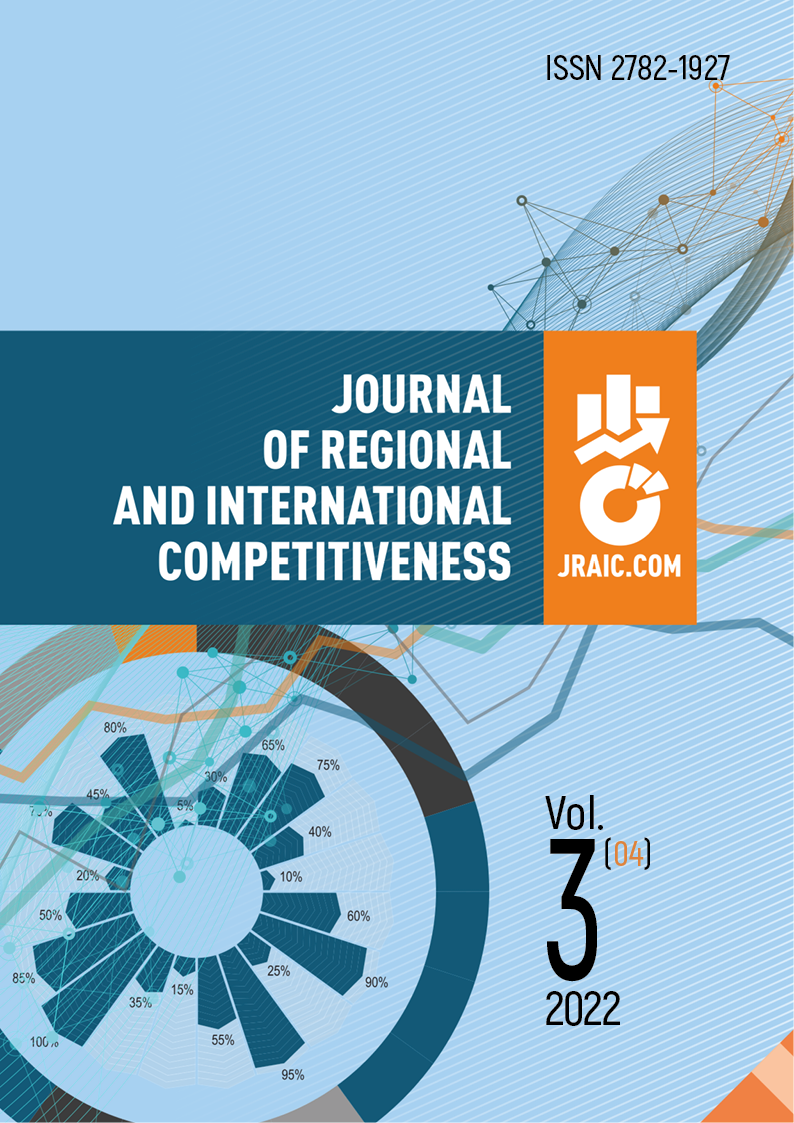Астана, Казахстан
Астана, Казахстан
The article provides a brief historical and economic analysis of the concept of «competition». Also it attempts to systematize the conceptual and categorical structure of the general theory of competition. Paper reveals the «cell» structure of separate competitive economic relations and some factors of competitive relations development in modern conditions The following conclusions can be drawn: competitive relations as a real object, competition as a subject of research of world economic science have a centuries-long history. Competition is one of the universal driving forces and forms of development of human society, a concrete manifestation of universal laws of dialectics in social life, and first of all in the sphere of economy. The basic conceptual and categorical structure of the general theory of competition, consisting of the following concepts: competition – competitor(s) – competitiveness – competitive power – competitive will – competitive quality – competitive attitude(s) – competitive environment – competitive advantage – competitive factor – innovative competitive factor, structure of a separate competitive attitude with the author’s definitions of each of them. The elementary structure of a separate competitive economic relation in the unity of competitive relations subjects (SCR) – people, economic structures and institutions; objects (subjects) of CER; economic interests (EI) of CER, economic contradictions (EC) of CER; laws (moral, economic, political, legal), regulating competitive economic relations and mechanisms of their contradictions resolution. The systematized conceptual and categorical apparatus of the general theory of competition and the developed structural model of a separate competitive economic relationship. It will allow further deepening of theoretical research of the phenomenon of competition, as well as their effective use in the implementation of government programs of a particular country, in this case the Republic of Kazakhstan on innovative development of national economy in the coordinates of modern and future world history, according to the authors. The dialectic of competition and monopoly is traced and the role of economic de-monopolization as an effective factor in the development of competitive relations in the modern economic system is revealed.
competition, monopoly, competitor(s), competitiveness, competitive power, competitive will, competitive quality, competitive attitude(s), competitive environment, competitive advantage, competitive factor, innovative competitive factor, structure of competitive, economic relations, demonopolization of the economy.
1. Smith, A. (1962). An Inquiry into the Nature and Causes of the Wealth of Nations. Moscow: Sozekgiz (in Russian).
2. Hobs, T. (1989-1991). A work in two volumes. (Vols. 1-2). Moscow: Mysl’ (in Russian).
3. Chamberlin, E. H. (1996). The theory of monopolistic competition: a reorientation of the theory of value. Moscow: Ekonomika (in Russian)
4. Robinson, J. W. (1986). The Economic Theory of Imperfect Competition. Moscow: Progress (in Russian).
5. Porter, M. (2005). On Competition. Moscow: Williams Publ. (in Russian).
6. Rubin, Y. B. (2008). Competition: Orderly Interaction in Professional Business. Moscow: Market DS (in Russian).
7. Bohr, M. Z. (1998). Fundamentals of economic research. Logic, Methodology, Organisation, Methodology. Moscow: DIS (in Russian).
8. Gordeev, V. A. (2008). Competition and its development: Monograph. Yaroslavl: Izd-vo YSTU (in Russian).
9. Abalkin, L. I. (Ed.) (1999). Economic Encyclopedia. Moscow: Ekonomika (in Russian).
10. Prokhorov, A. M. (1972). The Great Soviet Encyclopaedia (Vols. 30; Vol. 8). Moscow: Sovetskaya Ehntsiklopediya (in Russian).
11. Lopatnikov, L. I. (1996). Economics and Mathematics Dictionary = Math-econdictionary: Dictionary of Modern Economics. (4-th ed.). Moscow: ABF (in Russian).
12. Azrilyan, A. N. (Ed.). (1999). The Big Dictionary of Economics. Moscow: Institut Novoj Ehkonomiki (in Russian).
13. Raizberg, B. A., Lozovsky, L. Sh., & Starodubtseva, E. B. (2001). Modern Economic Dictionary. Moscow: Infra-M (in Russian).
14. Mamedov, O. Y. (1983). Socialist Production Relations. Rostov-on-Don: Izdatel’stvo Rostovskogo universiteta; same: (1990) Political Economy of Socialism. Introduction lecture. Rostov-on-Don; ibid: (1997) Production relation. A Political Economy Model. Rostov-on-Don: Phoenix (in Russian).
15. Fasmer, M. (2004). Etymological Dictionary of the Russian Language. (Vols. 4. Vol. 2). Moscow: Astril (in Russian).
16. Ozhegov, S. I. (1990). Dictionary of the Russian language. Moscow: Russian Language (in Russian).
17. Marx, K., & Engels, F. (1968). Letters on Capital. Moscow: Politizdat (in Russian).



















